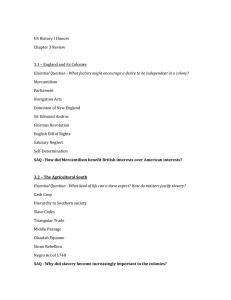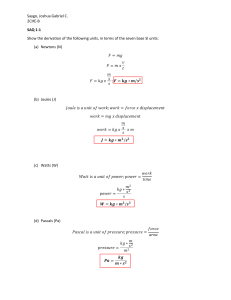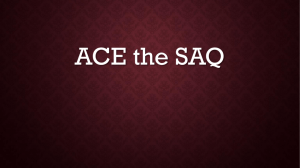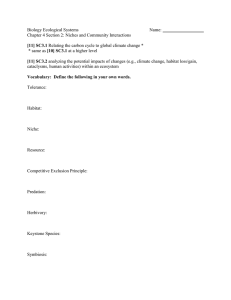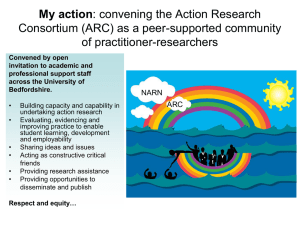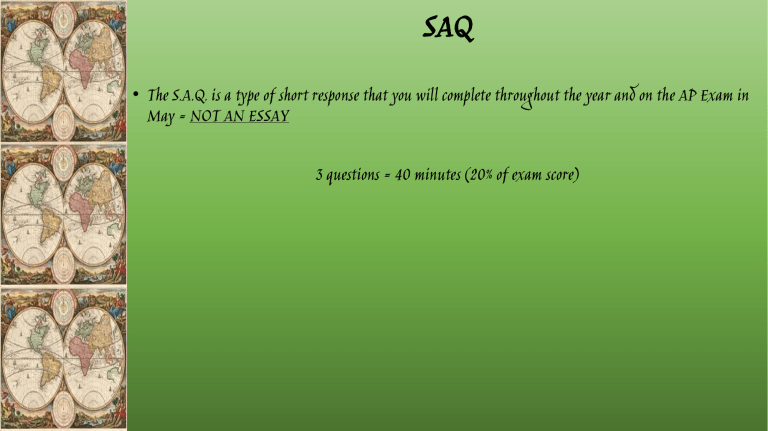
SAQ • The S.A.Q. is a type of short response that you will complete throughout the year and on the AP Exam in May = NOT AN ESSAY 3 questions = 40 minutes (20% of exam score) SAQ • Most short answer questions require historical thinking skills to respond to a primary source, a historian’s argument, non-textual sources (maps / data), or general propositions about world history • Each question will ask to identify and analyze examples of historical evidence that is relevant to the source or question • These examples can be drawn from the concept outline OR • From other examples explored in depth during classroom discussions and / or readings SAQ “Tips” • Some questions have multiple parts • Must answer ALL parts of each question = 3 points • MUST use complete sentences • Do NOT outline or bullet list = NOT Acceptable • Incomplete sentences will not be scored either on the AP exam or on your Unit Exams / Quizzes. • Do NOT quote! • If the SAQ asks you to explain a quote, use your OWN words. SAQ “Tips” • ONLY write in the box for scoring / need to answer the question FULLY • Approximately 13 minutes for each SAQ • Answer all parts of the questions in the box = one page per SAQ • You may not write more than one page • You may not write outside the lines of the answer sheet • Label: • Part A: _________________________ • Part B: _________________________ • Use the words in the question • Identify and explain one change = “one change is______” Analyzing Short Answer Questions T.E.A. Method (Topic / Evidence / Analysis) • T.E.A. Stands For: Using T.E.A. for the SAQ • Topic: State an answer (mini-thesis) for the question. Opinion (a thesis statement is not required for this type of response) • Evidence: Facts that support your topic that come from outside the prompt: class materials, books, lectures, discussions that are FACTUAL. • Analysis: Make the connection. How does your evidence support your opinion? How does your opinion and evidence relate to any stimulus material from the question? *** By using TEA, you guarantee the appropriate length for your SAQ responses *** SAQ Answer Sheet • You will be given a single box to write in. • Do not write outside of this box! It will not be read. • Do each part of the question separately. • Write in complete sentences. Sample SAQ A. Briefly explain ONE example of how contact between Native Americans and Europeans brought changes to Native American societies in the period 1492 to 1700. B. Briefly explain a SECOND example of how contact between Native Americans and Europeans brought changes to Native American societies in the same period. C. Briefly explain ONE example of how Native American societies resisted change brought by contact with Europeans in the same period. T.E.A. Responses to Sample SAQ A. Briefly explain ONE example of how contact between Native Americans and Europeans brought changes to Native American societies in the period 1492 to 1700. The introduction of the horse made the Native Americans more mobile as compared to their pre-Columbian lifestyle. For example, the Plains Indians now expanded their buffalo hunting since they could cover more territory. The Native Americans had very few beasts of burden like horses prior to European contact. T.E.A. Responses to Sample SAQ B. Briefly explain a SECOND example of how contact between Native Americans and Europeans brought changes to Native American societies in the same period. The introduction of diseases such as smallpox killed millions of Native Americans. The Native Americans had no immunity to diseases brought by Europeans and so many died quickly. This allowed Europeans to conquer vast territories more quickly, as many native groups were weakened. T.E.A. Responses to Sample SAQ C. Briefly explain ONE example of how Native American societies resisted change brought by contact with Europeans in the same period. Native American groups fought back against European attempts at conquest. The Aztecs used weapons such as spears to hold off the conquest of the Spanish for a time. Native groups wanted to preserve their ways of life and traditions, and so often put up a substantial resistance.
